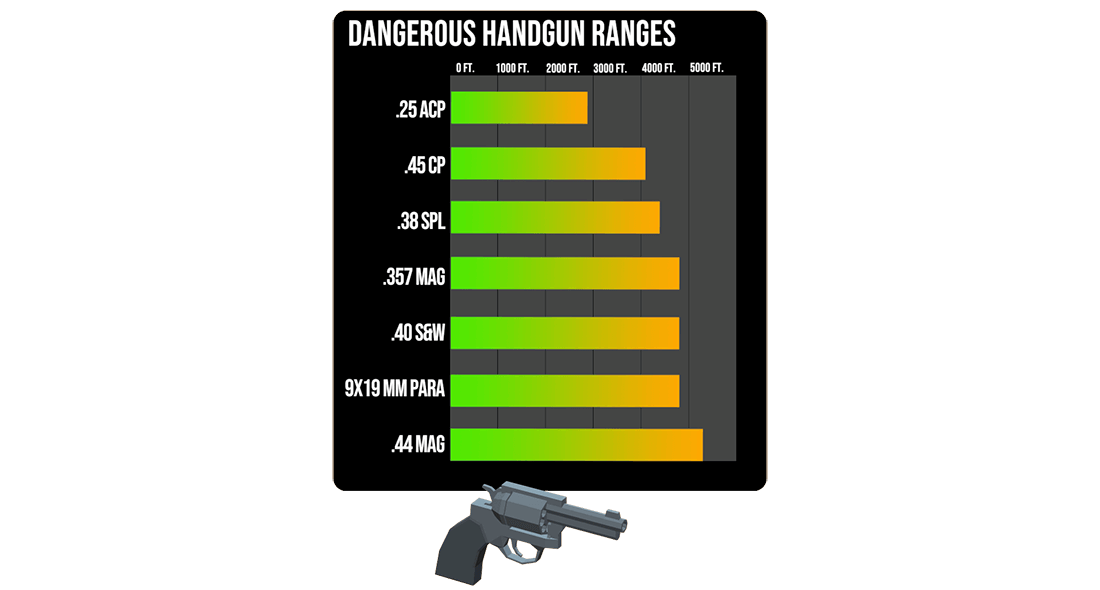How far can an bullet travel?
A bullet can travel a very long distance — much farther than most people think.
The exact range depends on the type of gun, bullet weight, and the angle of the shot, but here’s a clear and safe overview:
Rifle Centerfire Bullets
Caliber |
Max Distance (approx.) |
|---|---|
|
.223 / 5.56 NATO |
~3,000–3,500 yards (1.7–2 miles) |
|
.308 Winchester |
~4,000–4,500 yards (2.3–2.5 miles) |
|
.30-06 Springfield |
~4,500–5,000 yards (~2.8 miles) |
|
7mm Rem Mag / .300 Win Mag |
~5,000–5,500 yards (≈3 miles) |
|
.50 BMG |
over 4 miles (7,000+ yards) |
These distances represent maximum flight range, usually at a launch angle of around 30–35 degrees, NOT effective or accurate shooting range.
Handgun Centerfire Bullets
Caliber |
Max Distance |
|---|---|
|
9mm |
~2,000 yards (~1.1 miles) |
|
.45 ACP |
~1,500 yards (~0.85 miles) |
|
.44 Magnum |
~2,500 yards (~1.4 miles) |
Handguns have much shorter max range but can still travel over a mile if fired at an upward angle.
Shotgun Pellets
-
Birdshot: 200–400 yards (very short range)
-
Buckshot: ~500 yards
-
Slug: ~800–1,000 yards
Key Safety Principle
Even when fired accidentally or “into the air,” a centerfire bullet can travel:
-
At least 1 mile, and often 2–3 miles with rifle rounds
-
Still be lethal when coming down, especially large calibers
Never fire a gun without a safe backstop — bullets don’t just “drop” a few hundred meters.


